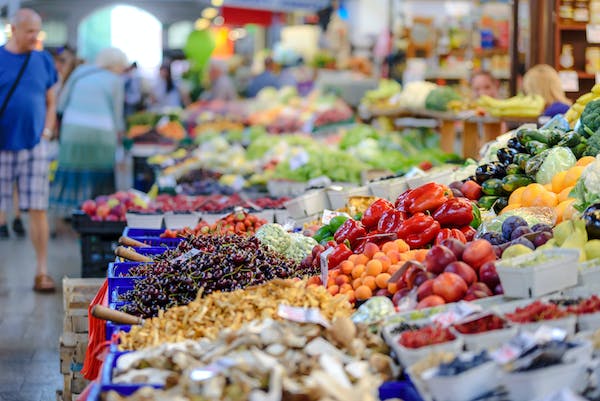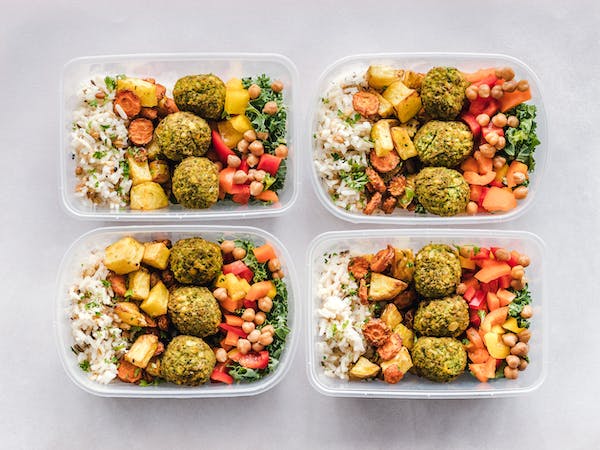In an age where every dollar counts and budgeting is more critical than ever, finding ways to start saving on food has become a top priority for many households. The grocery store is where a significant portion of our hard-earned income is spent, and the costs can add up quickly. Fortunately, there are plenty of strategies and tactics that savvy shoppers can employ to trim their grocery bills without sacrificing the quality and variety of their meals.
How to Start Saving on Food
In this comprehensive guide, we will explore 50 practical and effective ways you can start saving on food, from planning and budgeting to smart shopping and meal preparation. Get ready to embark on a journey towards a more cost-conscious and financially responsible approach to your grocery shopping.
1. Plan Your Meals

Meal planning is a highly effective strategy for saving money as it allows individuals to optimize their grocery spending, minimize food waste, and make informed purchasing decisions. By carefully planning meals in advance, individuals can create detailed shopping lists, ensuring they only buy the necessary ingredients, reducing impulse purchases.
2. Buy in Bulk
Buying in bulk offers several benefits when it comes to saving on food in Canada. Firstly, purchasing items in larger quantities often leads to lower unit costs, providing a cost-effective approach to shopping. This is because bulk purchases often come with discounts or reduced per-unit prices compared to buying individual items.
3. Use Coupons

Using coupons offers a range of benefits, making it a savvy strategy for consumers looking to start saving on food. Firstly, coupons provide immediate discounts, allowing shoppers to pay less for the same items or services. Coupons can also encourage trial and exploration of new products or services that customers might not have considered at full price. Use an App like Flipp which allows users to browse digital flyers from local stores, find deals, and clip digital coupons.
4. Utilize Cashback Apps
Use cashback apps such as Checkout51 which gives you cashback when you purchase groceries and gas. Earning cashback on your grocery and gas purchases is a great method to lower your overall expenses beyond just saving on food alone.
5. Store Loyalty Programs
Signing up for grocery store loyalty programs is advantageous as it unlocks a range of exclusive benefits and savings for customers. These programs often offer members special discounts, personalized promotions based on individual shopping habits, and the opportunity to earn points that can be redeemed for discounts, free products, or other rewards.
6. Compare Prices and Request Price Matches
Asking for a price match in a grocery store is essential for consumers seeking the best value for their purchases. This practice empowers shoppers to take advantage of competitive pricing strategies among retailers, ensuring that they pay the lowest available price for the same product. By requesting a price match, customers can avoid unnecessary expenses and stretch their budget further. Use Flipp or another similar app to browse prices across multiple grocery stores and ask your local store if they can match the price.
7. Buy Seasonal Produce
Buying seasonal produce is crucial for saving money as it aligns with the natural cycles of agricultural abundance, resulting in lower prices due to increased supply. Seasonal fruits and vegetables are typically grown locally and require less effort to cultivate and transport, reducing overall production costs. This cost-effectiveness is passed on to consumers through lower prices at the grocery store.
8. Shop Local Farmers’ Markets

Shopping at farmers’ markets provides an array of benefits for consumers looking to save money. These markets often offer fresh, locally grown produce at competitive prices, cutting out the middlemen and reducing transportation costs. Since the products come directly from local farmers, there is a shorter supply chain, and the produce is typically in-season, offering better value for money.
9. Opt for Frozen and Canned Foods
Opting for frozen or canned foods when fresh food prices are high presents several benefits for budget-conscious consumers. These items often offer a more cost-effective alternative without compromising nutritional value. Frozen fruits and vegetables are typically picked at their peak freshness and flash-frozen, preserving essential nutrients. Canned goods, on the other hand, have a longer shelf life, allowing consumers to stock up during sales or promotions, minimizing the impact of fluctuating fresh produce prices.
10. Reduce Meat Consumption
Reducing meat consumption offers significant financial benefits for individuals looking to save money on food. Meat is often one of the costlier components in a grocery budget, and replacing or supplementing it with plant-based protein sources like beans, lentils, or tofu can be more economical. Plant-based proteins are generally more affordable and can be purchased in bulk, providing sustained energy and nutrition at a lower cost per serving.
11. Shop Clearance
Shopping clearance at the grocery store can yield substantial benefits for savvy consumers who are looking to begin saving on food. Clearance items typically include products approaching their expiration date or those with packaging changes, resulting in significant price reductions. By exploring these sections, shoppers can find quality goods at a fraction of their original cost, allowing for considerable savings on their overall grocery bill.
12. Meal Prep

Meal prepping is a crucial strategy for individuals looking begin saving on food. Planning and preparing meals in advance not only helps avoid the temptation of convenient but costly takeout options but also allows for strategic purchasing of ingredients in larger, more economical quantities. By buying in bulk, taking advantage of sales, and utilizing cost-effective staple ingredients, meal prepping helps to reduce the overall cost per meal.
13. Use a Cashback Credit Card

Using a cashback credit card for grocery shopping offers a range of benefits for consumers. These cards typically provide a percentage of the purchase amount back as cash rewards, effectively granting users a discount on their grocery expenses. By strategically choosing a credit card with high cashback rates for grocery purchases, individuals can accumulate significant savings over time.
14. Limit Dining Out and Takeout
Eating at restaurants often incurs higher costs compared to preparing meals at home, where ingredients can be purchased in larger, more economical quantities. By reducing the frequency of dining out, individuals can allocate a more significant portion of their budget towards grocery shopping, enabling them to take advantage of cost-effective ingredients and control portion sizes.
15. Avoid Pre-Made Meals
Avoiding pre-made meals provides substantial financial benefits by allowing individuals to cut down on convenience costs and exercise greater control over their food budget. Pre-made meals often come with a premium price tag compared to preparing meals from scratch. By opting for raw ingredients and cooking at home, individuals can capitalize on bulk purchases, take advantage of sales, and use cost-effective staples, significantly reducing the overall cost of each meal. Avoiding pre-made meals will immediately help you start saving on food.
16. Budget and Track Spending

By establishing a budget for groceries, individuals can set realistic spending limits and allocate funds efficiently. Regularly tracking expenses allows for a detailed analysis of where the money is going, identifying potential areas for cost-cutting or optimization. This process helps shoppers become more mindful of their purchasing habits, avoid impulse buys, and focus on essential items. Additionally, having a budget and tracking expenses empowers individuals to plan for sales, discounts, and bulk purchases, maximizing savings over time. Once your budget is made it is important to learn how to stick to your financial plan and remained disciplined.
17. DIY Cleaning Products
Making DIY cleaning products offers a cost-effective alternative to commercially available cleaners, resulting in significant savings for households. Basic ingredients such as vinegar, baking soda, and lemon can be used to create effective and versatile cleaning solutions at a fraction of the cost of store-bought options. DIY cleaning products also empower individuals to reduce their environmental impact by minimizing the use of single-use plastic containers and harsh chemicals.
The Importance of Saving Money on Food
Saving on food is not only feasible but also incredibly rewarding. By implementing the 17 strategies we’ve discussed in this post, you can significantly reduce your grocery expenses and start saving on food in Canada. Whether it’s through careful planning, strategic shopping, or creative meal preparation, these tips and tricks empower you to take control of your grocery budget.
Remember, the money you save at the supermarket can be allocated to other essential aspects of your life or invested in your financial future. So, embrace these money-saving techniques, make them a part of your shopping routine, and watch as your savings grow while your dining experiences remain satisfying and fulfilling. Your financial health and well-being will undoubtedly benefit from these smart food-saving strategies.





